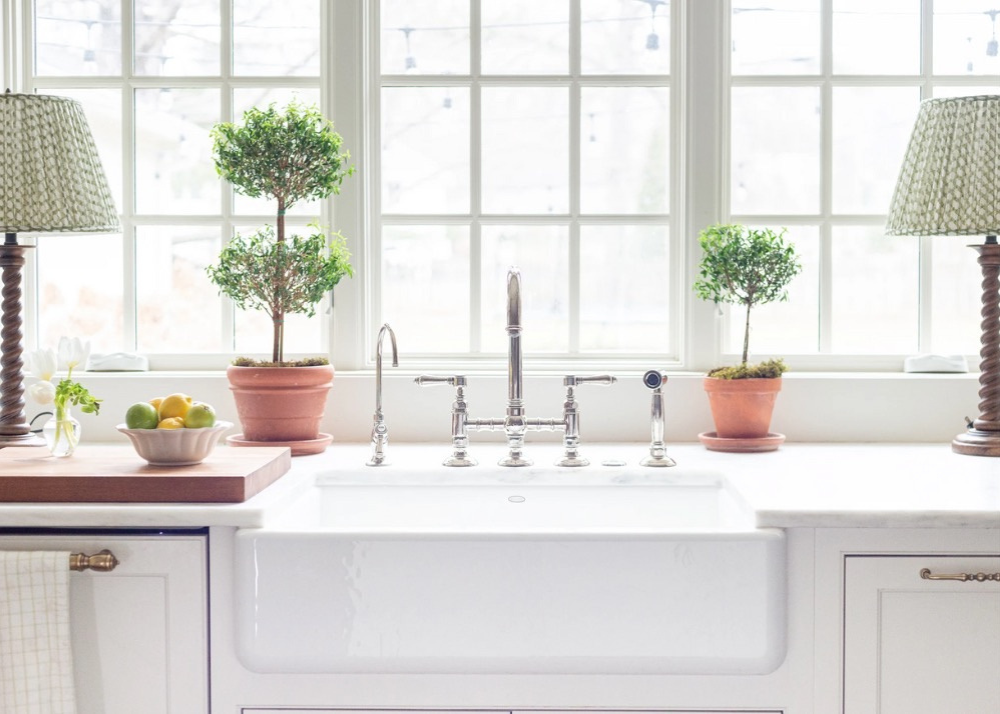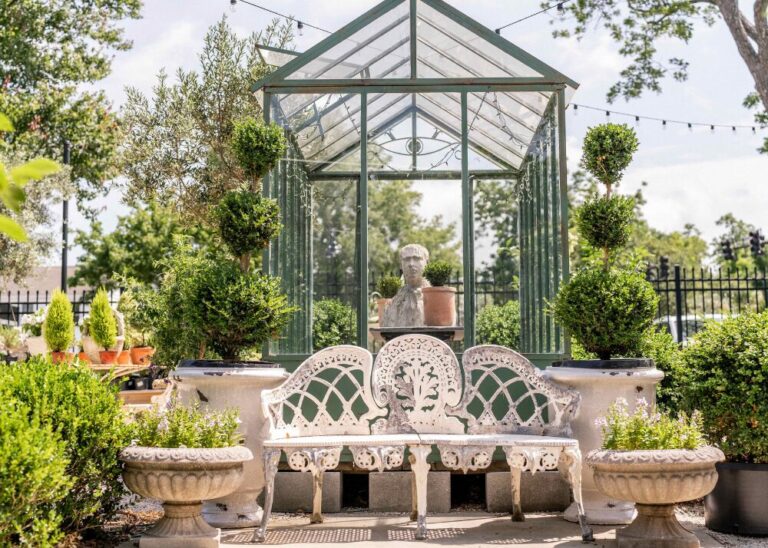
Whether you have a pair flanking the front porch or small trio perched in a kitchen window we love a topiary at Garden & Grace. Its structured imperfections and verdant color instantly elevate a room with sophistication and whimsy.
For today’s post we’ll dive into a few topiary tips, and, of course, share inspiration of these bulbous beauties along the way.
1. Many Plants Can Be Topiaries
A number of plants can be twisted and sculpted into towering (or tiny) topiaries. The best choice depends on which zone you live in. Boxwoods, one of the most commonly used plants for topiaries, thrive in zones 4–9, while Dwarf Brush Cherries prefer 9–11, according to the pros at Better Homes & Gardens.
Juniper, Monterey Cypress, Dwarf Alberta Spruce, Myrtle, Lilac Standard, Hydrangea Standard, Holly, Arborvitae and Waxleaf Privet also take home the topiary trophy. Most photos in this post include a variation of boxwood and myrtles.


2. They can grow indoors or outside
Topiaries thrive in the ground or in a container that can be displayed indoors or out. If you want to use a container, consider choosing one that’s slightly smaller than twice the size of its nursery pot. Since topiaries tend to be quite vertical, choose a sturdy planter to ground it.
If you’re planting the topiary outside, the pros suggest digging a hole two to three times wider than the root ball with the root flare peeking just above the soil. Surround the base with about two inches of mulch.
Get inspired: Tour a Storied North Carolina Garden


3. Upkeep is simple but constant
Topiaries require consistent, but restrained trimming about every four to six weeks, per The Cottage Journal. These plants often need sunlight and a healthy dose of hydration.
If you’re not so keen on the upkeep, you can always order some of my favorite faux boxwoods from Amazon (pictured up top) or a small, preserved bunch.



Lately on the blog… interior designer Kate Figler shows off her masterful ability to layer color and patterns for one personality-packed Nashville home.





